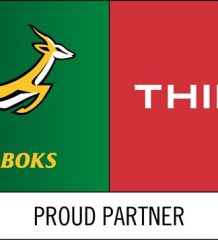2011 Super Rugby format explained

With less than 7 weeks to go before the new Super Rugby (Super 15) tournament kicks off, most fans are still scratching their heads with regards to exactly how the new format will work.
A lot of fans are still under the impression that their team will face every other team once and in the process try to finish under the Top 4 teams and secure a Semi-Final spot. That is NOT the case any more and a lot of changes have taken place that you should be aware of. This post will try and explain it in a manner that everyone will understand.
The addition of the Melbourne Rebels to the competition means each country in the SANZAR alliance (Australia, New Zealand & South Africa) now has a total of five teams representing them in the competition.
In one of three big changes the total of 15 teams are now split into three separate conferences, which can in a sense be seen as three different pools. Each conference is made up by the five teams from each different country.
-
The Australian Conference consists of the following teams: Brumbies, Reds, Waratahs, Western Force and the newly added Rebels
-
The New Zealand Conference consists of the following teams: Blues, Chiefs, Crusaders, Highlanders and the Hurricanes
-
The South African Conference consists of the following teams: Bulls, Cheetahs, Lions, Sharks, and the Stormers.
In the round-robin stage of the tournament, the focus shifts to the individual conferences, in other words, the local derbies with each team playing the other four teams in their conference twice during the round-robin stage on a Home and Away basis. This makes up a total of eight local derbies for each team.
Example 1: The Cheetahs will play the Bulls, Stormers, Lions and Sharks at home in Bloemfontein and then have to travel to Pretoria, Johannesburg, Durban and Cape Town to face each of those teams again.
Example 2: The Crusaders will do battle against the Blues, Chiefs, Highlanders and Hurricanes at home in Christchurch and then make the trip to Auckland, Hamilton, Otago and Wellington to do battle with them again.
In addition to the local matches, each team will face only four teams from the other two conferences, bringing the total of round-robin matches played by each team to 16.
Example 1: The Cheetahs will face the Waratahs, Reds, Brumbies and Rebels from the AUS Conference and then face the Hurricanes, Crusaders, Blues and Highlanders from the NZ Conference. This means the Cheetahs will not face Western Force from AUS or the Chiefs from NZ during this year’s round-robin stage.
Example 2: The Crusaders will face the Waratahs, Brumbies, Western Force and Reds from the AUS Conference and then go on to face the Sharks, Bulls, Stormers and Cheetahs from the SA Conference. This in turn means that the Crusaders won’t have to face the Rebels from AUS or the Lions from SA during the round-robin stage.
This in turn means that every team will play only four matches abroad unlike previous years where some teams had to travel for up to 7 weeks abroad. All teams will play 12 of their 16 round-robin matches on home soil.
In probably the biggest change of the tournament, the play-off teams are increased from four to six and where the play-offs were usually stretched over a two week period it now stretches over three weeks.
The team that tops the table from each individual conference will advance to the play-off stage of the tournament. This means that at least one team from each country will be involved in the play-offs and each country will host at least one play-off match.
The other three teams to qualify will be the sides with the most number of competition points, regardless of which Conference they are based in. In other words, if you view all teams and their accumulated points in a log format the top three teams based on points will advance together with the conference winners to make up the six teams to compete in the play-offs.
If you now put these six teams and their competition points into their own log, the top two teams will have a bye during the first week of play-offs and also earn themselves automatic spots in the Semi-Finals. Both of these teams will host a Semi-Final at home.
The other four teams will begin the play-offs with the 3rd placed team doing battle against the 6th placed, and in the other match the 4th placed team will face the 5th placed. The winners of these two matches will go on to face the two teams that have already secured Semi-Final spots.
Example:
After all round-robin matches have been completed the Waratahs from the AUS Conference, Crusaders from the NZ Conference and Stormers from the SA Conference all move on to the play-offs because the topped their conference points tables.
With three teams already in the play-offs, the Chiefs, Hurricanes and Sharks make up the final three teams because they have the most competition points after the conference winners are taken out of the equation.
With only six teams left the log will now look like this:
-
Crusaders
-
Stormers
-
Waratahs
-
Chiefs
-
Hurricanes
-
Sharks
This means the Crusaders and Stormers will sit out the first week of play-offs while the following two knock-out matches will take place to decide the other Semi-Finalists.
-
Knock-out match 1: Waratahs vs Sharks – Sydney
-
Knock-out match 2: Chiefs vs Hurricanes – Otago
With the Sharks and the Chiefs winning their matches they now move on to the following Semi-Finals:
-
Semi-Final 1: Crusaders(1st) vs Sharks(4th) – Christchurch
-
Semi-Final 2: Stormers(2nd) vs Chiefs (3rd) – Cape Town
With the Stormers and Sharks winning their matches the final will now look like this:
-
Final: Stormers vs Sharks – Cape Town
A short summary of the new format:
-
15 Teams – Five from each of the SANZAR countries
-
Teams are split into three separate conferences based on nationality
-
Each team will face their four “local” rivals two times (Home & Away)
-
Each team will face four teams from each of the other two countries
-
Each team will skip one team from the other two conferences
-
Six teams advance to the play-offs stretching over three weeks
-
The three teams topping their conference logs will advance to the play-offs
-
The three teams with the most points will secure the other three play-off spots
-
The two top teams automatically earn Home Semi-Final spots
-
Other four teams play in a knock-out round to decide the other Semi-Finalists
-
Semi-Finals and Finals take place as usual
We hope this made it a little easier for you to understand and if you have any questions please feel free to ask them under comments or email us with our questions.
You can also leave a comment on our Facebook Fanpage and we’ll answer it as speedy as possible.
You can view all the 2011 Fixtures at the bottom of this post: https://www.rugby15.co.za/2010/09/2011-super-rugby-schedule/
[james@rugby15.co.za]
Related Posts
« Adverse Analytical Finding – Basson and Ralepelle Old faces in new places »
















